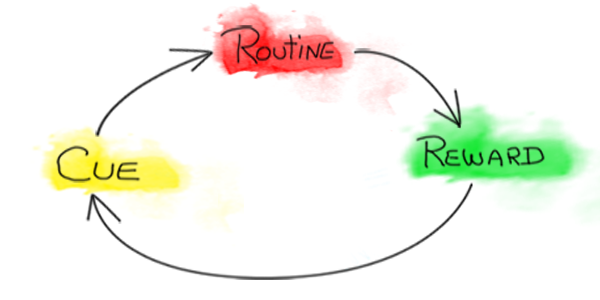Five Steps to Higher Productivity
Why do companies rarely address their culture? Because corporate executives have little to no training or understanding of how and what to change. Organizational Intelligence changes that. It reveals not only what we should be addressing but also provides a clear process for how to successfully make the changes.
Organizational Intelligence is the process of examining an organization's behaviors to eliminate bad behaviors and create good behaviors. This is critical because the cultural behaviors of an organization—the human processes—dictates whether business processes are adopted or not. For example, in a an organization that rewards working hard, it's almost impossible to get people to work smart because working hard is what's being rewarded. And people almost always act according to how they are being rewarded.
The Effectiveness Pyramid is a five-step process for creating more effective and efficient organizations. Applying the following five-step process will greatly increase your organization’s productivity.
Effectiveness Step 1: Clearly identify ‘what’ you want to achieve.
When it comes to the cultural behaviors of an organization—the human processes—the first step is to realize that what needs to be done is to determine your organization's current bad behaviors that should be eliminated and the desired new behaviors that need to be created.
For example, the ‘Fatigue Factor’ shows that working 60-hour weeks for 2 months yields the same productivity as working 40-hour weeks for 2 months. Even worse, working 60-hour weeks for 3 months yields an average productivity of only 19.5 hours.
If you knew what working 60-hour work-weeks does to productivity, would you still use that as a primary strategy for a project? Not likely, you would look for and find a smarter solution.
The myth of working hard shows us we often reward the wrong behavior—working hard rather than working smart. Not fully understanding what is to be accomplished increases the odds of going in the wrong direction. First, clearly understand what needs to be accomplished and what constitutes success before starting a project.
Effectiveness Step 2: Identify ‘how’ you will achieve your 'what'.
Our human processes—how we interact and behave—are constantly influencing our brain functions; helping or hurting our productivity as knowledge workers. So how do we determine what behaviors will increase productivity (good behaviors) and what behaviors are hurting productivity (bad behaviors)?
Identify the behaviors that put employees in their cognitive brain versus the behaviors that put them in their reptilian fight or flight brain.
The right human processes can easily shift brain energy to the cognitive areas of the brain. Research shows that positive or negative emotions quickly redirect the brain’s energy.

Positive emotions stimulate the cognitive areas of the brain—resulting in better problem solving, decision making, creativity, and intuition.
Negative emotions stimulate the reptilian brain: the ‘fight or flight’ part of the brain. On average, our reptilian brain consumes 65% to 70% of our brain energy. That’s good for cave men, but not knowledge workers who need to be in the cognitive brain.
How do you create a more productive organization: create habits and behaviors (our human processes) that keep your employees in their cognitive brain.
Effectiveness Step 3: Identify ‘who’ will accomplish the plan and get them on board.
Once you clearly understand what you want to accomplish and how you are going to accomplish it, you need to determine who will execute the plan and communicate the what and how.
Modifying a company's human processes—it's culture—required commitment from all levels of management. Often, an executive assigns the task to a person or a team, which in and of itself, is fine. However, too often the habits and behaviors of a culture comes from the top-down. Thus, if bad behavior at the executive level continues, there is little hope that the entire organization, rather than individual pockets or teams, can be improved. When it comes to human process there is only one answer as to who will accomplish the plan: everyone.
Determine what, then how, then who.
Effectiveness Step 4: ‘Do’ activities that map to your strategy.
Now that we know what needs to be accomplished (get rid of bad behaviors and create new good behaviors), how we are to accomplish it (keep employees in their cognitive brain) and who will do it (everyone), it is time to actually implement our plan. To create a more productive organization you will need to do the following:
- Identify existing bad behaviors and how they are currently being rewarded
- Identify desired behaviors that are either currently being done or that need to start being done
- Stop rewarding bad behaviors
- Start rewarding desired behaviors.
There are some behaviors (how we treat others) that will be common across all organizations. Depending on what the company does and their target product offerings, each company will identify unique behaviors. For example, manufacturing organizations will want to stress and reward areas such as safety and eliminating production errors, service organizations will want to reward positive customer interactions, and product development organizations might reward creativity.
As creatures of habit we tend to do that at which we are good. But what if it isn’t what we should be doing? What if what we are doing doesn’t map to our strategy, our how? If an activity doesn’t map to your how, why spend time doing it? Only do activities that map to your strategy! That's why it's so important to identify existing bad behaviors so that you can quit doing those activities.
Once we know the what, the how, and the who, it is key we only do activities that map to our how. Do what needs to be done, not just what you always do.
Effectiveness Step 5: ‘Watch’ to see if you are getting the right results.
Without constant feedback new behaviors seldom turn into habits of second nature. We are taught that practice makes perfect. Unfortunately, it doesn't. Practice doesn't make something perfect, it makes it permanent. For example, practicing a bad golf swing only gets you a bad golf swing. Research shows that the great, practice what they aren’t good at, while the good or average, practice what they do well. The myth of practice tells us that to be great; we need to be aware of what we are doing wrong.  That’s why the great have coaches and mentors who watch and point out what is not right. It's also why our behavioral psychologist know that in order to create a new habit or behavior, a watching mechanism (cue) is needed to instigate the repetitive behavior over and over until it becomes automatic. Without feedback, it’s easy to fall back into old habits. Feedback allows the right practice to be embraced.
That’s why the great have coaches and mentors who watch and point out what is not right. It's also why our behavioral psychologist know that in order to create a new habit or behavior, a watching mechanism (cue) is needed to instigate the repetitive behavior over and over until it becomes automatic. Without feedback, it’s easy to fall back into old habits. Feedback allows the right practice to be embraced.
Of all the lessons, watching brings the greatest benefits because it constantly corrects our path and most importantly, it forces us to repeat a behavior until it becomes a habit. Determine what, then how, then who, then do; but above all watch to see if what you are doing is getting the right results.
Graphics & Photography Copyright © iOdyssey, © Shutterstock or ©iStockphoto



